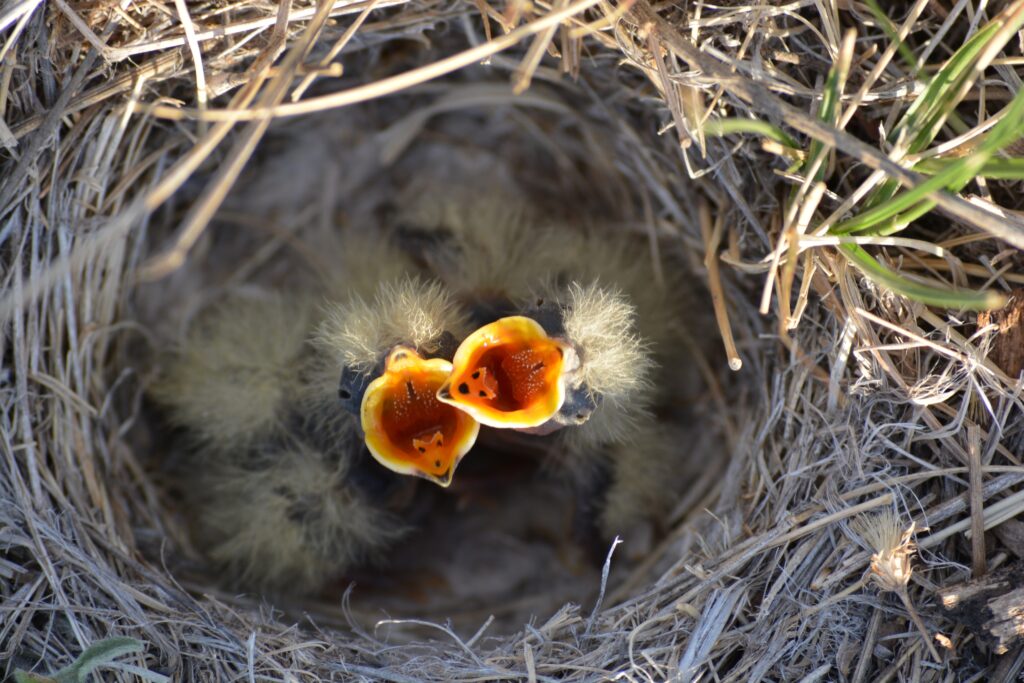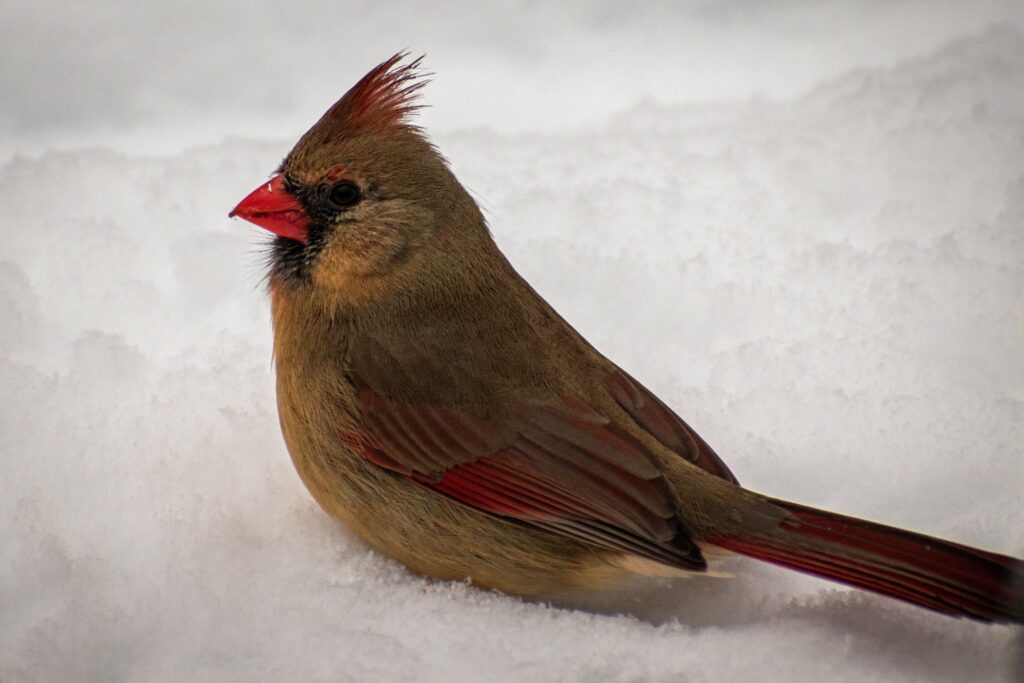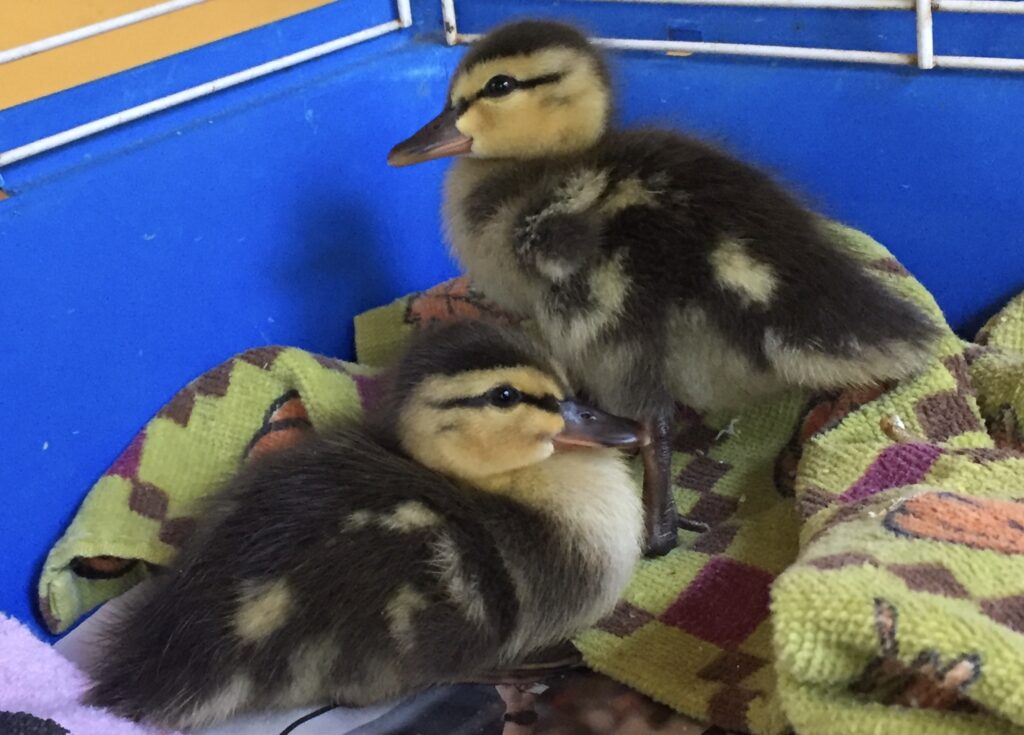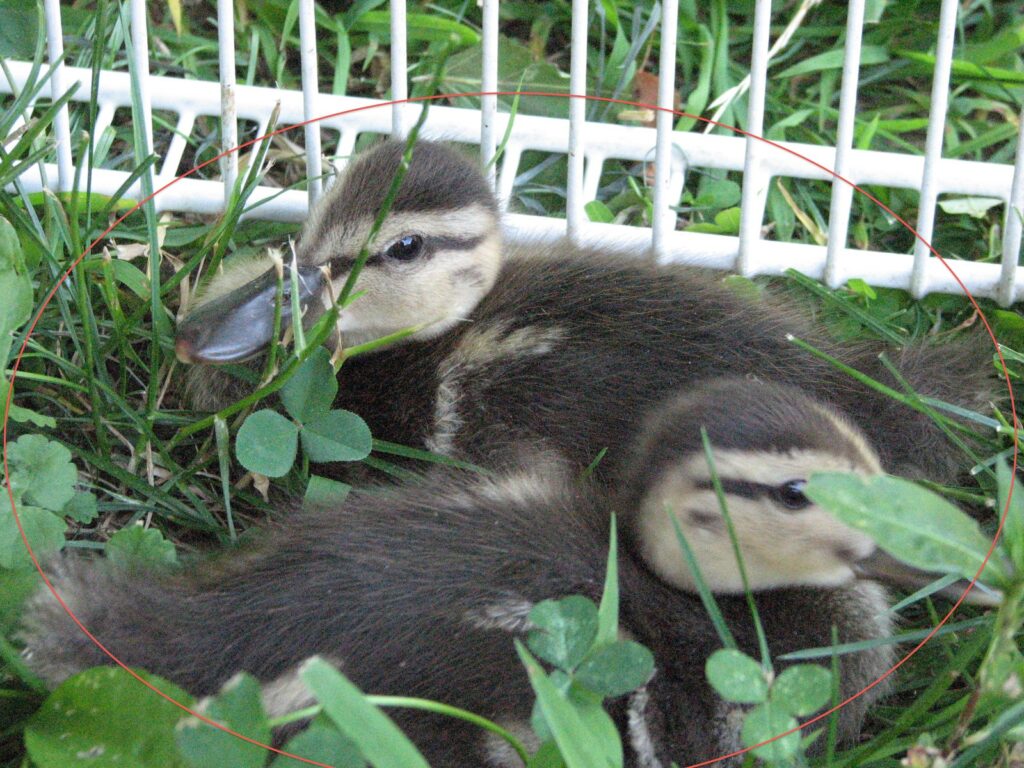Songbird | Waterfowl
Songbird FAQ
Songbirds are hatched:
- With their eyes closed.
- With scarcely any or no feathers.
- Dependent on their parent’s care.
Nestling Songbird
The development stage of a young bird from the time it hatches until it leaves the nest.
Fledgling Songbird
The stage of growth of a young songbird that has recently left the nest. At about 3 weeks of age young songbirds:
- Are fairly well feathered but not yet flying.
- Are still somewhat dependent on their parent(s) for food and protection.
- Are still being monitored by their parents.
Second Chance Wildlife Helpline: 513-875-3433
What should I do if I…
Found a nestling baby bird that fell out of its nest?
Tree-Nesting Birds
- If displaced from the nest and not injured, the nestling can be placed back in the nest.
- If the displaced nestling is cold to the touch, warm it for 5 to 10 minutes in your cupped hands before placing it back in the nest.
- If nest is not accessible, a make-shift nest structure can be made from:
- a small plastic bowl with holes punched in the bottom for rain drainage.
- a small open-weave hanging basket.
- a small plastic berry container.
- Place the original nest in the bowl or line the bowl with dry leaves or straw.
- Secure the artificial nest structure as high as possible in the same tree or in the nearest tree to where the original nest and/or nestling were found.
Cavity-Nesting Birds
- Displaced or abandoned Eastern Bluebirds can be fostered into monitored Bluebird nest boxes with young of the same size. Do not introduce more than 1 or 2 nestlings per box.
- Swallows, Wrens, Starlings and other cavity nesters can be fostered into other nests of the same kind.
- If fostering is not an option, a make-shift nest can be created from a wood box or plastic container with a lid.
- The structure should be large enough to accommodate the adult bird as well as the nestlings.
- The structure needs an entrance/exit opening on 1 side which must be placed facing the same direction as the original nest site entry.
Second Chance Wildlife Helpline: 513-875-3433
Found a fledgling songbird?
If you find a fledgling out in the open where predators might easily find it, you may pick it up and move it to a nearby location.
- Place it under a shrub or bush.
- Perch it on a low branch or twig.
- Put it in a flowerbed.
Second Chance Wildlife Helpline: 513-875-3433
Found an egg on the ground?
- An egg that has fallen from a tree or a cavity nest is almost always no longer viable.
- The trauma of hitting the ground destroys the fragile embryonic contents. For this reason, it is not recommended to try hatching found eggs.
- There are many variables to the process of correctly hatching an egg through artificial heat. If any one thing is not exactly right, the outcome can be disastrous, including severely deformed hatchlings.
- Killdeer nest on the ground and do not sit on their eggs to incubate them; the eggs are laid on rocks and are incubated by the heat of the sun and should be left where they are found.
- The captive incubation of abandoned duck, Canada goose, and turkey eggs must be evaluated on a case-by-case basis taking many factors into account:
- Has the incubation process started?
- Have the eggs been disturbed?
- Has the rotation of the eggs been messed up?
- If the eggs have started to be incubated, have they cooled down?
- Are the eggs damaged, chipped or cracked?
Saw a bird fly into a window and it appears stunned?
When a bird flies into a window it often: suffers a mild concussion and is unable to fly for a brief period of time. The window may appear as an illusion, an opening the bird thinks they can fly through.
Treatment for a bird that is stunned:
- Place the bird in a paper grocery bag or a small box.
- Fold the top closed.
- Poke a couple of dime size air holes on either side of the bag or box.
- Set the bag or box in a warm, dark, quiet place for 1 to 2 hours.
- After 1-2 hours take the bag outside, open it up.
- Allow the bird a few minutes to wake up and fly away.
- If the bird does not or is not able to fly away, rehabilitation assistance is needed.
See a bird flying into my window over and over again?
The bird sees its reflection and is trying to chase off that other bird in its territory. This behavior can continue for days and even weeks.
To break the pattern of behavior:
- Put up a bird feeder near the window; the area will become active with so many birds that the offender will give up his territory battle with his illusionary adversary.
- Draw on the outside of the window with a fluorescent marker. Virtually invisible to the human eye but creates a visible barrier to birds.
- Spray the outside of the window with spray on snow; the bird will no longer be able to see his reflection and will stop the annoying behavior.
- A less attractive, but very effective solution is to cover the outside of the window with newspaper for 1 -2 weeks.
Second Chance Wildlife Helpline: 513-875-3433
Have a large windows that birds often fly into?
Birds don’t see the window but rather what the window reflects and what is on the other side of the window.
To reduce birds flying into your windows:
- Situate feeders close to your windows
- Close curtain and blinds:
- to break up the deception of a clear passage.
- to reduce the reflection of trees, plants, flowers and other habitat vegetation in the glass.
- Move houseplants away from windows that a bird may think is place to perch.
- Mark the outside of the window with soap.
- Put decals, stickers, sun catchers, mylar strips, or masking tape on the outside of the window.
- Apply One-way transparent film to the window that allows people on the inside to see out, but makes the window appear opaque on the outside.
Second Chance Wildlife Helpline: 513-875-3433
Have birds in my chimney making loud noises?
- It is most likely the birds are Chimney Swifts.
- Chimney Swifts have lost most of their original preferred nesting habitat of hollows in old trees and have chimneys to be a good substitute.
- Chimney Swifts feed on mosquitoes, biting flies, termites and other nuisance insects making them valued birds for controlling bugs.
- It only takes about three weeks for the adults to raise their young and then leave the chimney.
- It is best to leave them alone because Chimney Swifts can be difficult to raise in captivity and often don’t survive.
- After the young have fledged, and left the chimney, consider installing a chimney cap.
Second Chance Wildlife Helpline: 513-875-3433
Hear a woodpecker “drumming” on my home?
Woodpecker’s drum:
- To indicate they are claiming the area as their territory.
- To forage for insects and bugs.
Second Chance Wildlife Helpline: 513-875-3433
What can be done to deter a woodpecker?
- Loosely hang long strips of shiny, reflective tape that will blow in the wind near the focal point of where the woodpecker is drumming.
- Hang windsocks on the corners of your home.
- Mount pinwheels near the area of drumming activity.
- Hang one or more of the balloon type animal deterrents with holographic eyes.
- Apply environmentally safe commercial deterrent products to the area.
- Use auditory deterrents that emit predatory bird calls and distress signals.
Second Chance Wildlife Helpline: 513-875-3433


Duck & Geese (Waterfowl) FAQ
Waterfowl are hatched with:
- Their eyes open and a covering of fine, soft feathers called down.
- The ability to walk shortly after hatching.
- The capability to eat on their own.
- Only a partial dependence on their parents for food and protection.
Second Chance Wildlife Helpline: 513-875-3433
What should I do if I…
Found a baby duck or goose?
Young Mallard Ducks and Canada Geese may be fostered into another family.
- Young of the foster family must be close in age and size to the orphan(s) to be fostered.
- Fostering steps:
- Locate a foster family.
- Isolate family from water.
- Walk through the group, forcing the young to go in different directions.
- Place orphans on the ground and move a distance away.
- Allow the foster mother a chance to call her young back to her.
- Fostered chicks should readily join the group and respond to the adult’s call.
- If fostering is not successful, rehabilitation assistance is needed.
Second Chance Wildlife Helpline: 513-875-3433
Found a baby wood duck?
Wood ducks:
- Are usually hatched along moving water, creeks, streams, and rivers.
- Swim away with their mother soon after hatching.
- Do not return to the nest site, so a reclaim attempt will not work.
Because of these reasons, wood duck hatchlings that are found without an adult will need rehabilitation assistance.
Second Chance Wildlife Helpline: 513-875-3433


